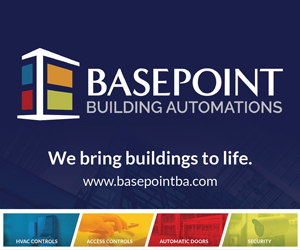Iowa gets broadband boost with aid of grant

.floatimg-left-hort { float:left; } .floatimg-left-caption-hort { float:left; margin-bottom:10px; width:300px; margin-right:10px; clear:left;} .floatimg-left-vert { float:left; margin-top:10px; margin-right:15px; width:200px;} .floatimg-left-caption-vert { float:left; margin-right:10px; margin-bottom:10px; font-size: 12px; width:200px;} .floatimg-right-hort { float:right; margin-top:10px; margin-left:10px; margin-bottom:10px; width: 300px;} .floatimg-right-caption-hort { float:left; margin-right:10px; margin-bottom:10px; width: 300px; font-size: 12px; } .floatimg-right-vert { float:right; margin-top:10px; margin-left:10px; margin-bottom:10px; width: 200px;} .floatimg-right-caption-vert { float:left; margin-right:10px; margin-bottom:10px; width: 200px; font-size: 12px; } .floatimgright-sidebar { float:right; margin-top:10px; margin-left:10px; margin-bottom:10px; width: 200px; border-top-style: double; border-top-color: black; border-bottom-style: double; border-bottom-color: black;} .floatimgright-sidebar p { line-height: 115%; text-indent: 10px; } .floatimgright-sidebar h4 { font-variant:small-caps; } .pullquote { float:right; margin-top:10px; margin-left:10px; margin-bottom:10px; width: 150px; background: url(http://www.dmbusinessdaily.com/DAILY/editorial/extras/closequote.gif) no-repeat bottom right !important ; line-height: 150%; font-size: 125%; border-top: 1px solid; border-bottom: 1px solid;} .floatvidleft { float:left; margin-bottom:10px; width:325px; margin-right:10px; clear:left;} .floatvidright { float:right; margin-bottom:10px; width:325px; margin-right:10px; clear:left;}
The state of Iowa will receive a matching federal grant worth $2.2 million to help fund a broadband Internet mapping and planning initiative that could help close the digital divide in Iowa by bringing the benefits of high-speed Internet access to the unserved and underserved areas of the state.
The U.S. Department of Commerce’s National Telecommunications and Information Administration (NTIA) is using money from the American Recovery and Reinvestment Act (ARRA) to fund the Iowa project as well as similar mapping projects in the other 49 states, five territories and Washington, D.C. In total, NTIA will dole out approximately $100 million in grants to help fund each state project, so that it can create a dynamic national broadband map that will be updated twice a year.
“Congress rightly recognized that increasing broadband access and adoption in communities being left behind in the 21st century economy depends on better data collection and broadband planning,” said Lawrence Strickling, assistant secretary for communications and information and NTIA administrator.
The hope, according to NTIA, is to increase broadband access and adoption, and make planning easier, by creating state maps and a national map to show the availability, speed and location of broadband access across the country. Such maps don’t currently exist.
“There is a piecemeal way for people to tell, but there isn’t a comprehensive way right now,” said Jessica Schafer, NTIA press secretary. “You might be able to call up your local provider and ask them what their area is, but it is hard for people to get a comprehensive picture of what the broadband situation is in any specific area.”
Connected Nation, a nonprofit that has mapped eight states, is the designated entity to map Iowa. Connected Nation created Connect Iowa, a partnership between the Iowa Utilities Board, the Iowa Broadband Deployment Governance Board and Connected Nation, to lead the initiative in the state. The state of Iowa will provide direction and supervision to planning activities that will be undertaken by Connected Nation in an effort to make sure the funds are used to address the specific needs of the state.
“The Iowa broadband map is the foundation upon which policy leaders and industry will build a plan to bring high-speed Internet access to the unserved and underserved parts of Iowa,” said Robert Berntsen, chair of the Iowa Utilities Board.
Connected Nation will implement its brand-new interactive mapping tool called BroadbandStat, which will allow the public to view, analyze and validate broadband data. The map will function much like a Google map, according to Connected Nation communications director Jessica Ditto, who said the map would be searchable and enable users to see where broadband service is available, the speed of service and availability of service at schools, libraries, hospitals, universities and public buildings.
Each involved organization feels that the tool will be something policy-makers, consumers and businesses can use as a decision-making tool. Schafer gave an example of a business looking to invest in a new area, using the map to determine if it will have access to sufficient broadband for its purposes. She said it will also allow policy-makers to better know where to focus efforts to expand broadband access.
Of the $2.2 million going to Iowa, $1.7 million will be used for mapping over two years, and $500,000 will be used for broadband planning activities over a five-year period. Ditto says the planning component will help take the mapping process to the next level because it involves understanding and analyzing the data that is gathered and it will help state policy-makers track the deployment of broadband over the course of the mapping project. This will allow policy-makers at the Iowa Utilities Board to plan out broadband expansion efforts and allow for statewide surveys to determine how many people use broadband.
“Because BroadbandStat is an interactive portal, those planning dollars will be even greater utilized because they will be able to show the economic impact of broadband deployment and project what the economic impact would be if broadband was deployed in an area,” Ditto said. “Or they will be able to use the topographic and demographic information that is revealed on a map to determine how much it will cost to expand broadband in areas that have been identified as unserved or underserved.”
Some studies, according to Ditto, have shown that one-third of Americans who have access to broadband don’t take advantage of it. As part of the planning process, data that is collected in the map will be used to help battle those adoption issues. She also said the Connect Iowa program can help raise awareness about the benefits of using broadband.
NTIA is required by the ARRA to have the interactive national broadband map completed and publicly available by Feb. 17, 2011. Even before the grant was secured, Connected Nation began compiling a list of Iowa providers and alerting them it would soon be asking for data so the organization would be prepared for the massive amount of data collection.
Ditto said Iowa has more broadband providers than any other state in the country, which can make it more difficult to compile the data. She said an exact time frame for the completion of the Iowa map is still not set, but the goal is to be done as soon as possible.








